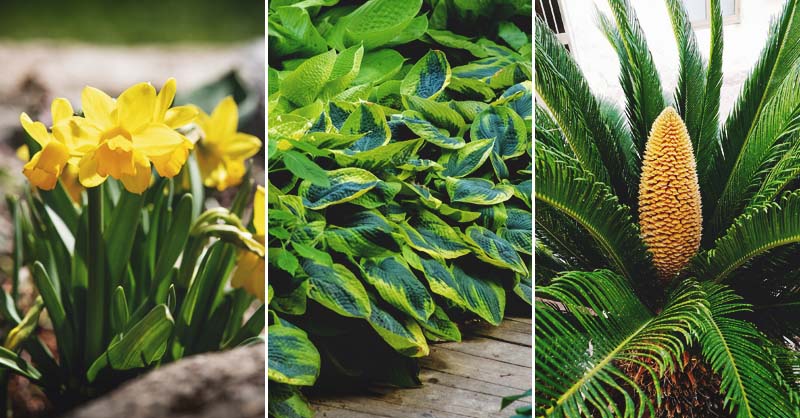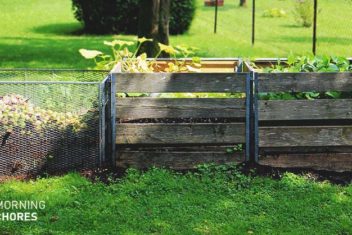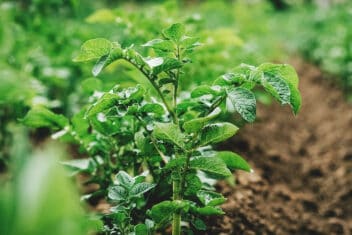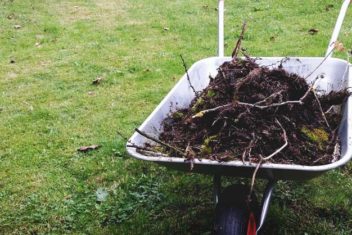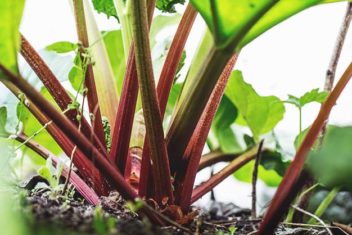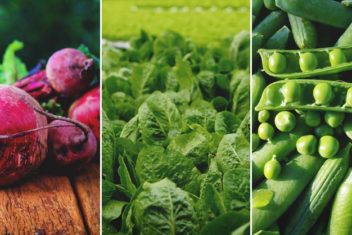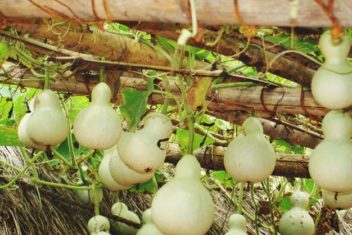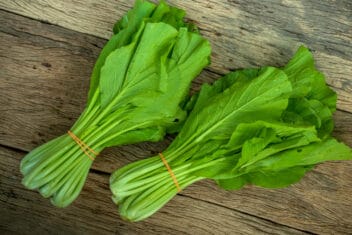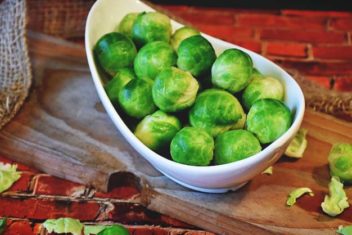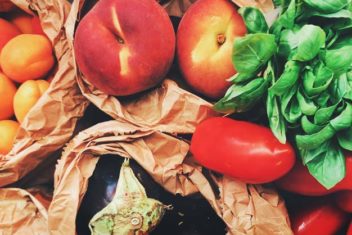Dogs are mans best friend. Or in my case, my dogs (there are four) are this woman’s best friends. We take good care of our fur babies and want them to be safe and healthy. We feed them the best food and take them in for regular visits to the vet, but we may not consider all the plants poisonous to dogs that surround us. Many common plants are toxic to animals and can make your furry friend sick or even cause death.
We’ll share with you a list of plants that are poisonous to dogs. Some are common veggies that you may be growing to feed your family. Some are houseplants that are sitting in your window. Many are plants we grow to add some beauty to our yards.
Once you know what to watch for, you can help ensure that your precious pooch stays safe.
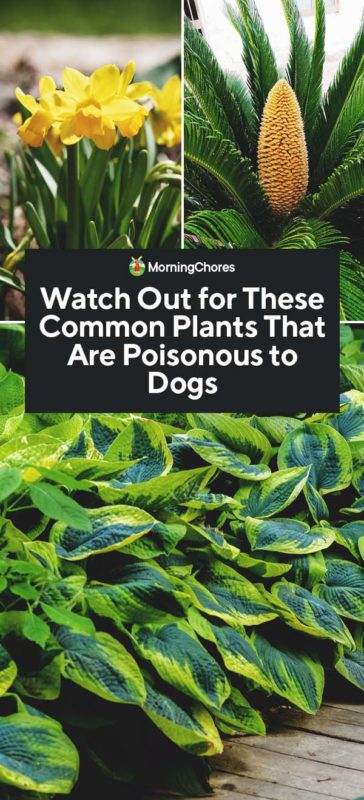
What To Do if Your Dog Ate Something Poisonous
If you are reading this because your dog ate something and you need immediate help please call your veterinarian. You can also call the Animal Poison Control Center APCC 24-hour emergency poison hotline at 1-888-426-4435.
Never induce vomiting without instructions from a professional. Sometimes vomiting can make the situation worse and cause more harm. Be sure to collect some of whatever it was your dog ate so that your doctor can use it for identification.
Poisonous Plants
1. Aloe

Believe it or not, this healing medicinal plant can be dangerous to your dog. While using the gel topically is fine, allowing Fido to eat the leaves and roots isn’t. They contain saponins which can cause vomiting and diarrhea.
2. Amaryllis
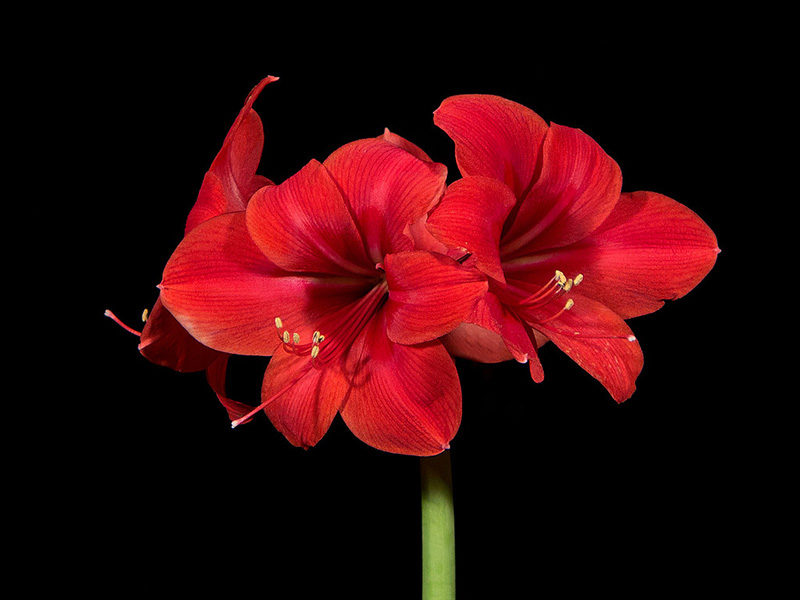
This traditional Easter flower is poisonous to dogs. Amaryllis causes dogs to salivate excessively and experience abdominal pain. They may vomit and/or have diarrhea.
3. American Holly

Also referred to as inkberry and winterberry, holly contains saponins, which cause vomiting and diarrhea in dogs (and humans, too). Don’t let your pooch nibble on this holiday favorite.
4. Apple Tree
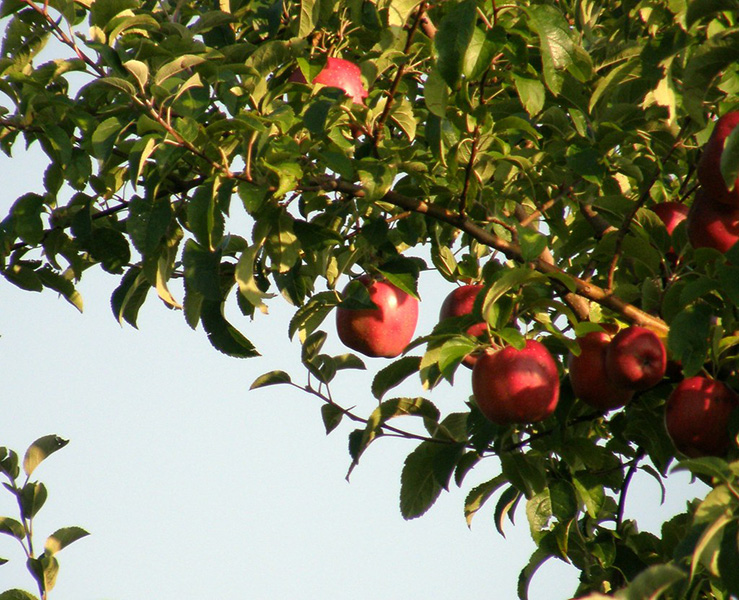
When we say that the apple tree is poisonous, we’re not talking mom’s apple pie. We are referring to the parts of the tree. The stems, leaves, and seeds inside the fruit all contain cyanide.
The leaves are especially dangerous in the fall when they are wilting. Ingestion of apple tree parts can cause your dog to pant, exhibit dilated pupils, and have difficulty breathing.
5. Autumn Crocus

There are two types of crocuses: A spring and a fall variety that are different species. Both are poisonous. The Autumn crocus has a higher level of toxicity. It can cause a burning sensation in the mouth, as well as liver damage and possible seizures. The spring type causes gastrointestinal upset, including vomiting, diarrhea, and drooling.
6. Azaleas
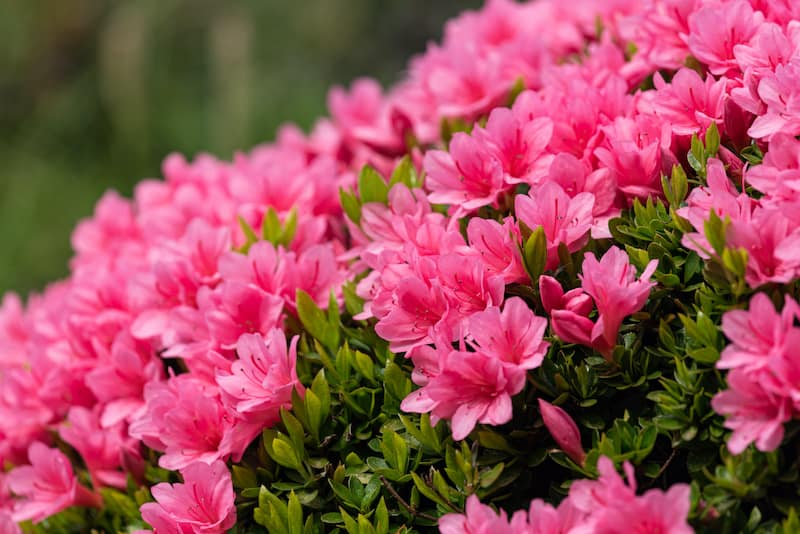
The leaves of the azaleas are highly toxic and eating a few can cause an immediate reaction. Azalea irritates the mouth and causes vomiting and diarrhea. Eating azalea leaves can kill your dog, so contact poison control or your vet to find out the steps you need to take if your pooch gets into this plant.
7. Bay Laurel
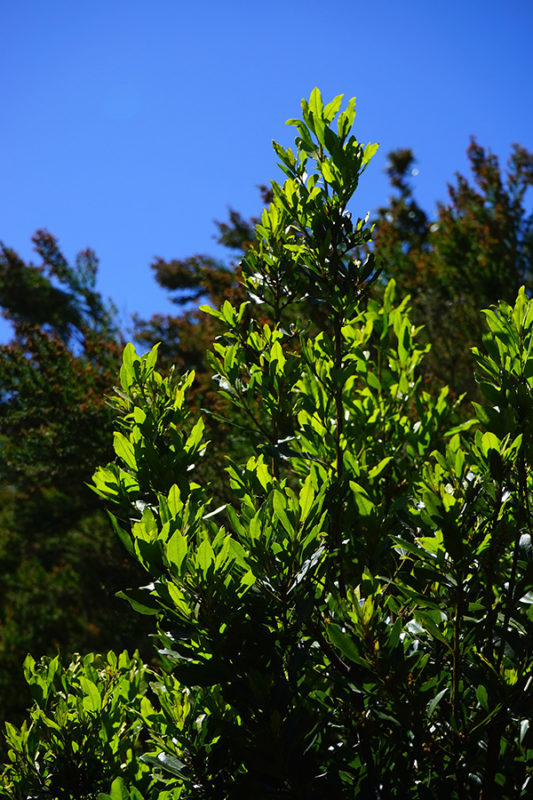
Bay is a popular garden plant and house plant, not to mention seasoning. It contains eugenol which is toxic to dogs. Bay leaves can cause excess salivation, vomiting and kidney failure.
8. Begonia
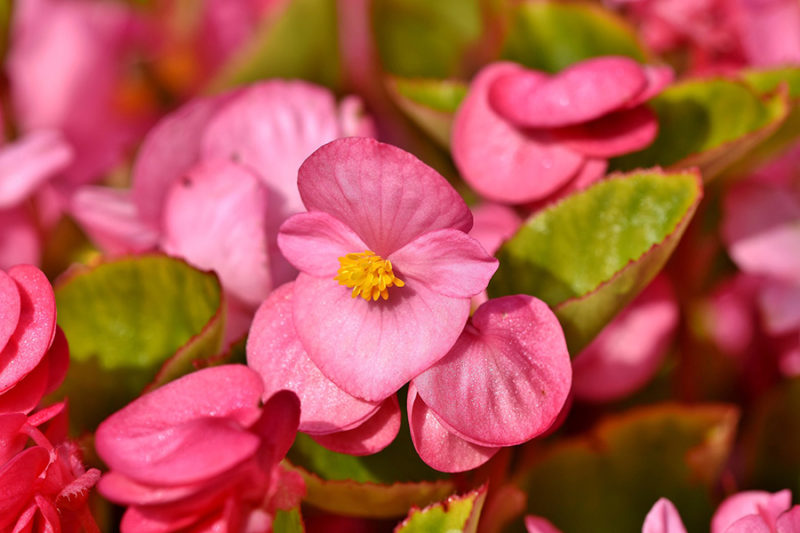
All parts of the begonia are toxic to dogs, but the roots have the highest level of calcium oxalates, which is a substance that causes vomiting and diarrhea.
9. Calla Lily
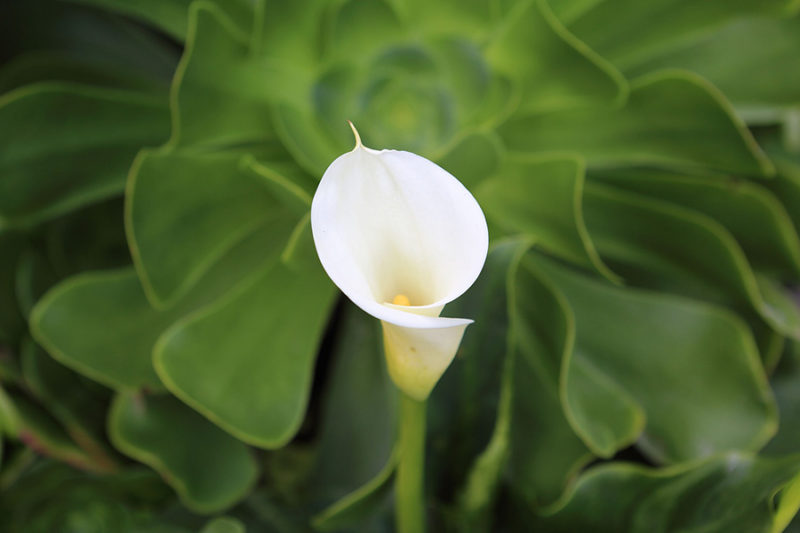
These exotic plants add a special touch to a garden but make sure Fido doesn’t eat them. Calla lily, also known as trumpet lily, contains calcium oxalates which cause irritation, drooling, vomiting and difficulty swallowing.
10. Cherry
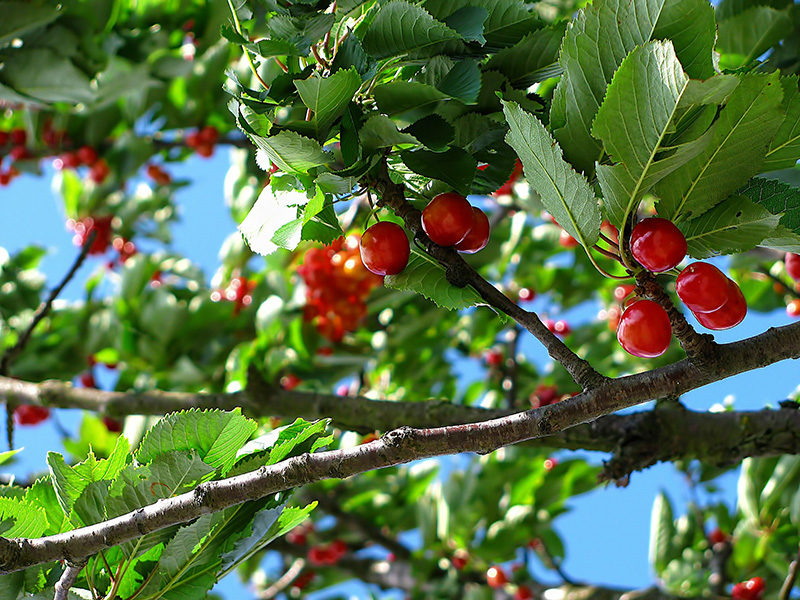
If you have livestock, you probably know that the cherry tree is toxic. Cherry leaves and branches contain cyanogenic glycosides which are harmful to many species including humans.
Additionally, the cherry pit contains cyanide. If your dog eats cherry tree parts, they may exhibit breathing difficulty, dilated pupils and go into shock.
11. Cyclamen
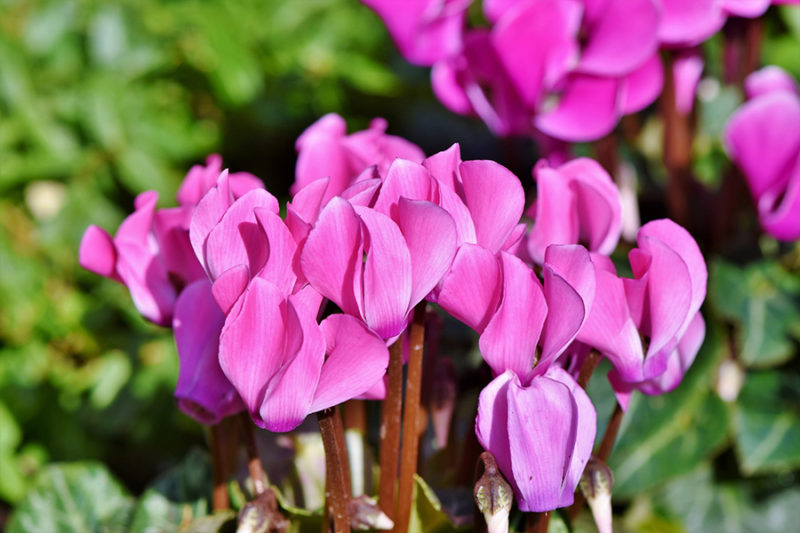
Cyclamen, or sowbread, can cause vomiting and diarrhea. In extreme cases, seizures and even death can occur.
12. Daffodil
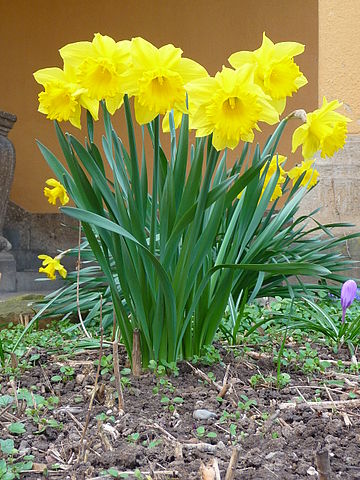
The entire daffodil plant is considered toxic, but the bulb is the worst part. Be careful when planting bulbs if your dog is with you. My dog Riley thinks everything round is a ball and sometimes I have to use caution to make sure she does not pick up something harmful.
Daffodils cause vomiting, diarrhea, and abdominal pain, which may lead to a drop in blood pressure and seizing. Tulips have the same effect as daffodils.
13. Daisy
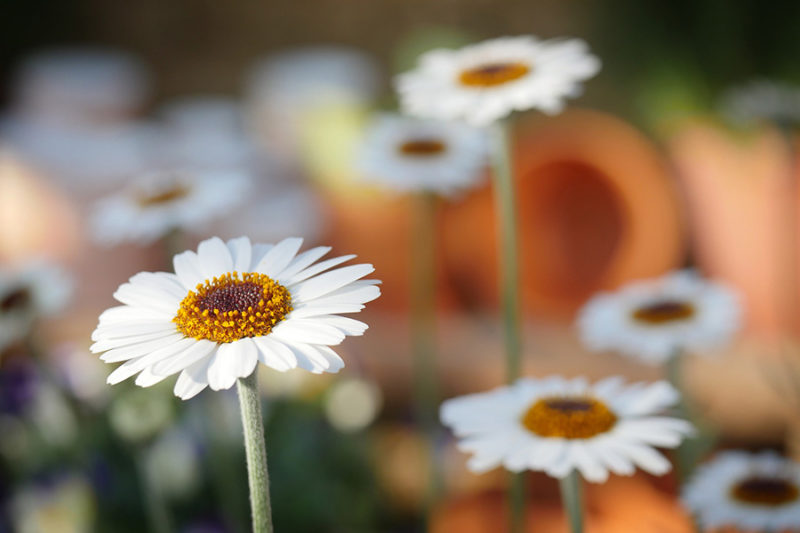
I love daisies. They are such a happy flower. You wouldn’t think that they’re toxic to dogs, but it’s true. The daisy contains sesquiterpene which causes excessive salivation, vomiting, and diarrhea, and can lead to uncoordinated movement.
14. Dieffenbachia

This popular houseplant, also known as Dumb Cane, causes stinging in the mouth, excessive drooling, and swelling in the mouth and throat.
15. English Ivy
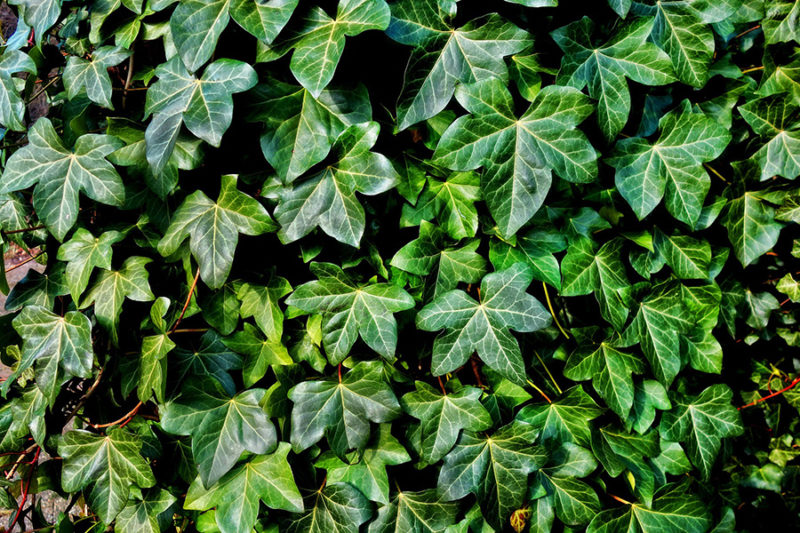
You can find English ivy just about anywhere these days, whether in the home or growing wild in the forest. While many people like the look of ivy, it can be harmful if ingested. It contains saponins, which cause abdominal pain, excess salivation, diarrhea, and vomiting.
16. Fleabane
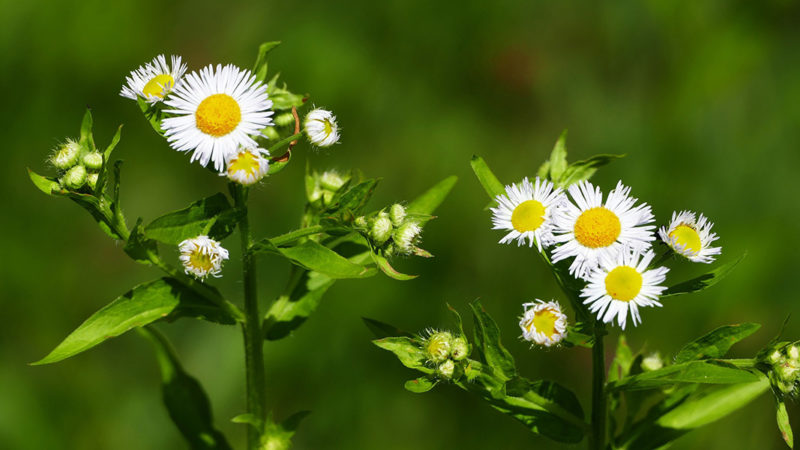
Fleabane grows wild over much of the U.S. It has a positive reputation for keeping fleas away and is used as a tea for urinary tract infections. It’s a mild toxin for dogs which can cause stomach upset and indigestion.
17. Foxglove
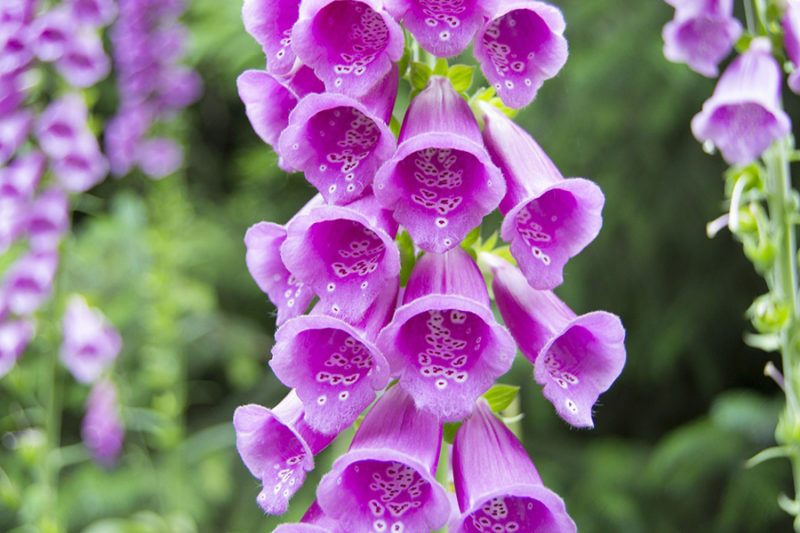
Foxglove is one of the quintessential cottage garden plants. They can also be deadly to humans and your pets. Every part of the plant is poisonous, from the bell-shaped flowers to the roots.
Appropriately used, the compounds in foxglove have life-saving properties that can help people with heart failure. Consumed by a pet (or child), it can make your heart slow or beat irregularly.
18. Garlic
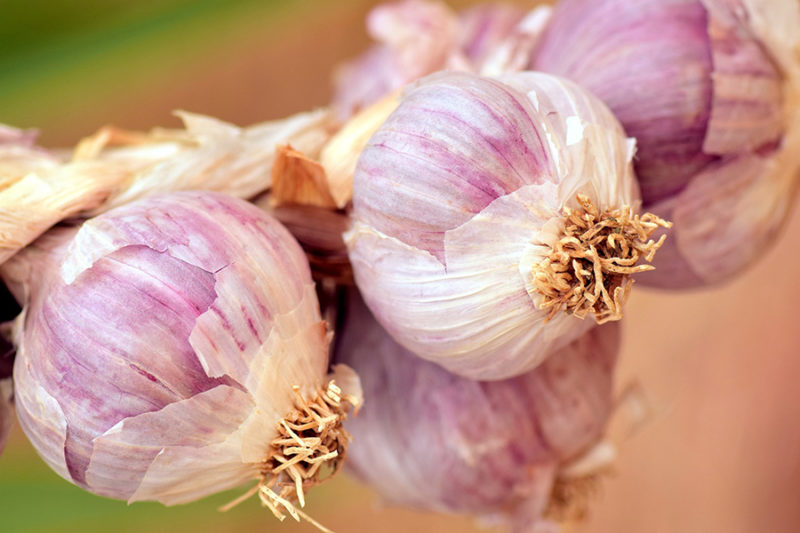
Garlic is great, right? It is a favored seasoning and medicinal supplement for humans. But garlic can be poisonous for your dog. It can lead to a breakdown of red blood cells which causes anemia. In addition, it can affect your dog’s heart rate and cause general weakness.
19. Grapes
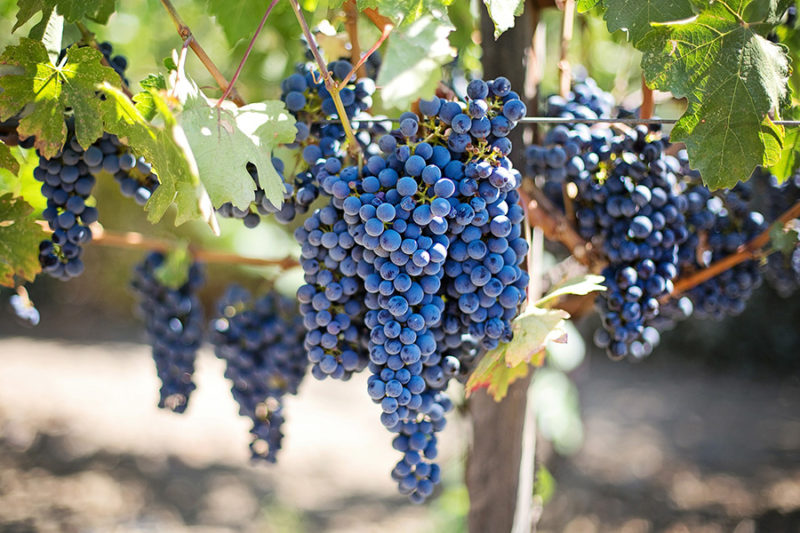
Grapes, along with raisins and currants, are poisonous to dogs. Toxicity varies from type to type and from dog to dog, but the wrong dose can cause liver failure. Initially, dogs who consume grapes may vomit and be lethargic. After 24-48 hours, dogs may begin to have kidney failure, so it’s essential to get your pet to the vet quickly.
20. Hops
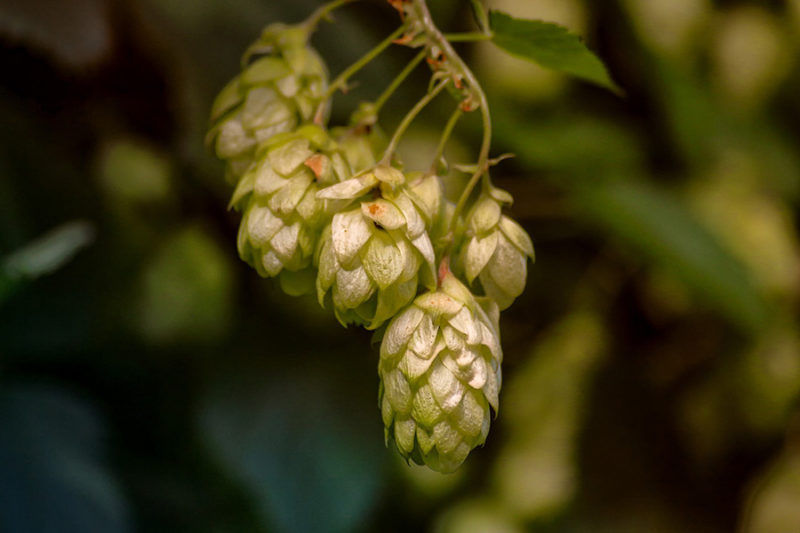
Sometimes we need a cold brew at the end of the day. Fido, however, needs to abstain. Maybe he can be your designated driver, instead?
That’s because hops can cause panting and an increase in body temperature. This can lead to seizures and even death. Furthermore, the yeast in beer is also bad for your dog.
21. Hosta

Hostas contain saponins, which are poisonous to dogs. If your dogs eat a hosta plant, it can cause bloating, loss of appetite, abdominal pain, diarrhea, and vomiting.
22. Hydrangea
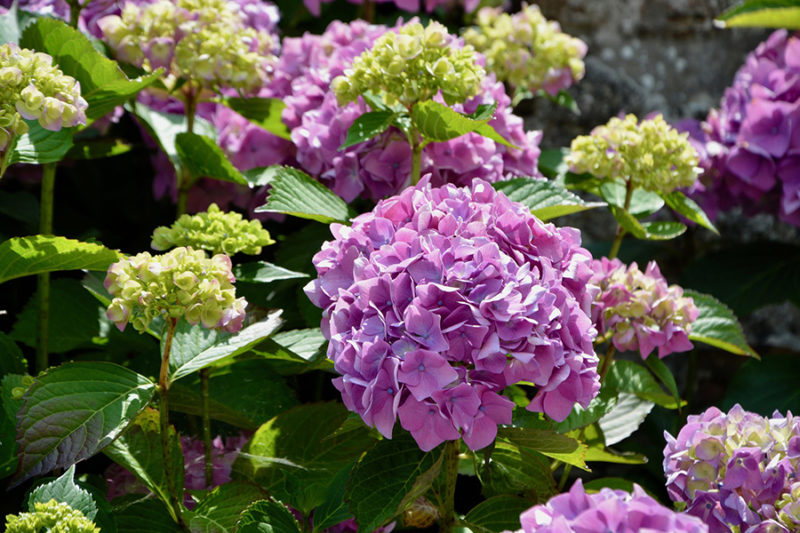
Hydrangeas are beautiful, but they’re also poisonous for dogs. They contain cyanogenic glycosides, which can cause lethargy, depression, vomiting, diarrhea, and an increase in heart rate and body temperature.
23. Iris
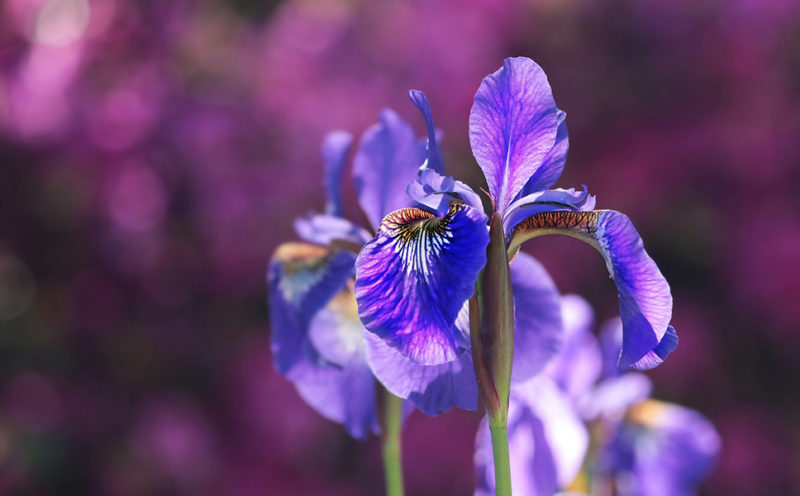
Pretty purple irises can be an irritant to your dog’s skin and a stomach. It can cause drooling, vomiting, diarrhea, and lethargy.
24. Jade Plant
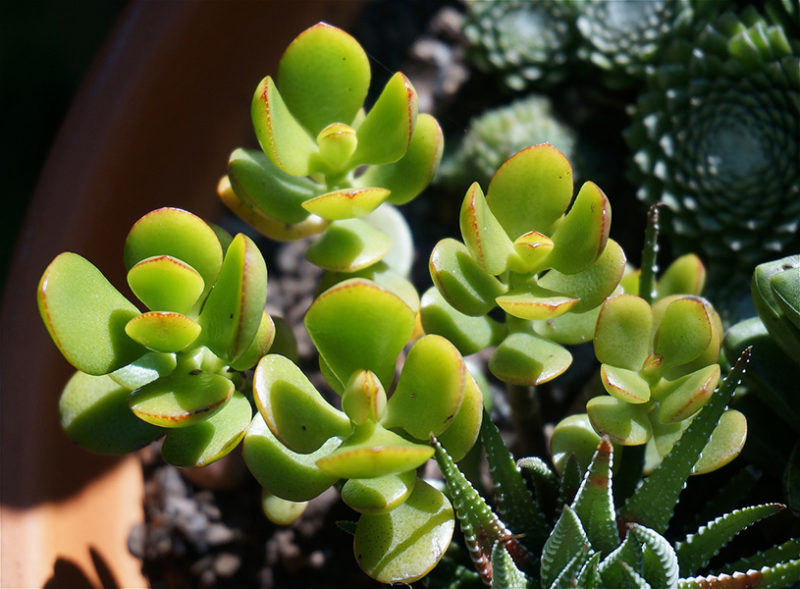
The jade plant – also known as the rubber plant – is part of the Crassulaceae family, and all the plants in this family are poisonous to dogs. Consuming this plant causes vomiting, lethargy, abdominal pain, weakness, and depression. In extreme cases it can lead to a slowed heart rate and convulsions.
25. Juniper
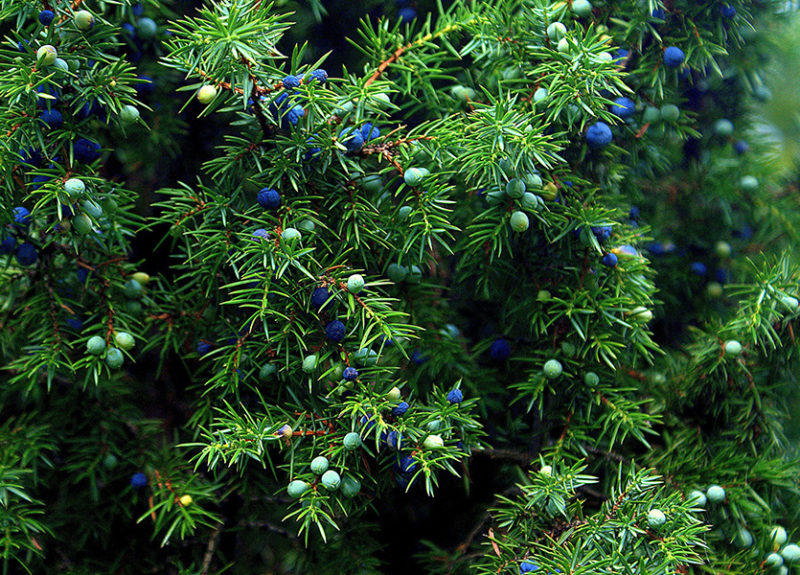
Blue star junipers are poisonous to dogs. The berries, needles, and stems contain compounds that can make your dog mildly sick with vomiting or diarrhea. Though it isn’t one of the most deadly plants out there, it’s best not to let your pooch play fetch with juniper wood.
26. Kalanchoe
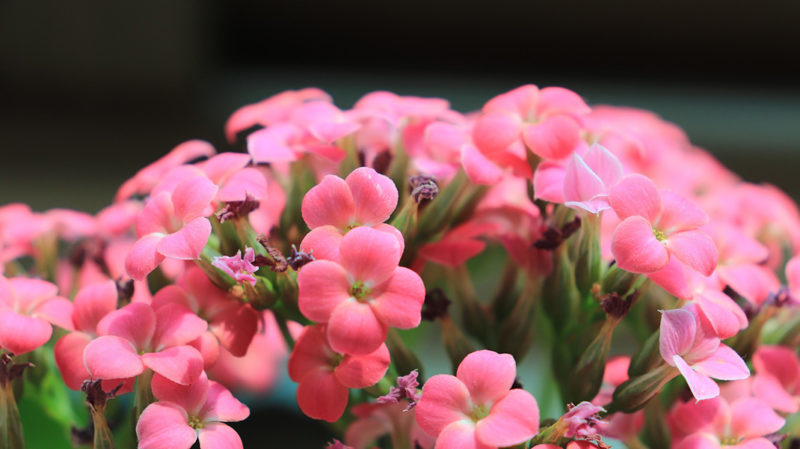
Kalanchoe comes in over 125 different varieties, and they all look different. If your dog (or cat) eats this plant, it may cause vomiting and diarrhea. In extreme cases, it can cause abnormal heart rhythm.
27. Lilies
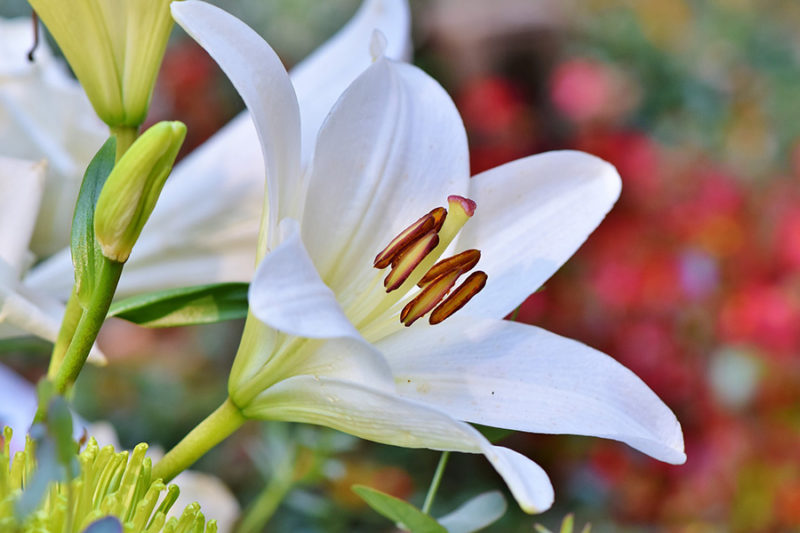
There are several types of lilies, and it’s essential to understand the different types. Some don’t have much toxicity, while some are extremely poisonous.
Peace, Peruvian, and Calla lilies are one group. These lilies cause drooling and irritation of the mouth.
The group of lilies that contain the plants Tiger Lily, Day Lily, Asiatic lily, and the spring favorite, the Easter Lily, are potentially deadly. Ingestion of the leaves can cause liver failure.
28. Locust
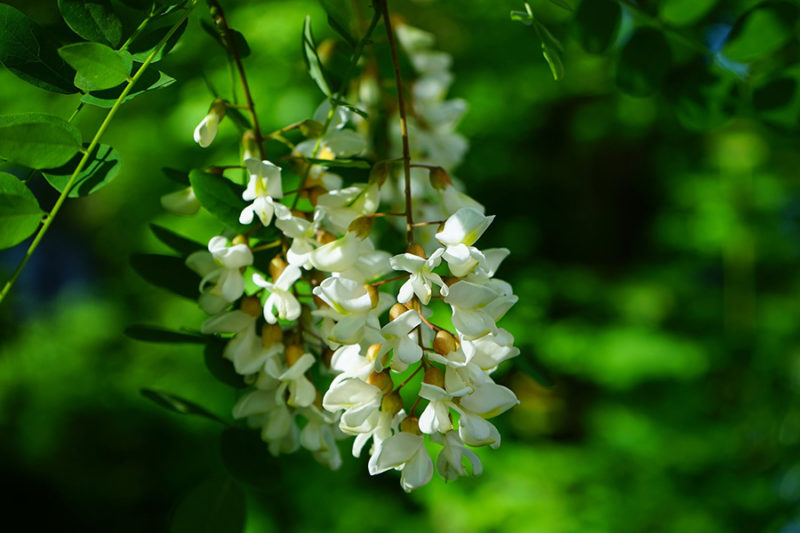
I encourage locusts to grow on my farm along my fences, even though they’re messy trees that drop branches and seed pods to the ground. The bark, leaves, and seeds of the locust are all toxic to your dog. They can cause vomiting, bloody diarrhea and difficulty breathing which can lead to death.
29. Marijuana
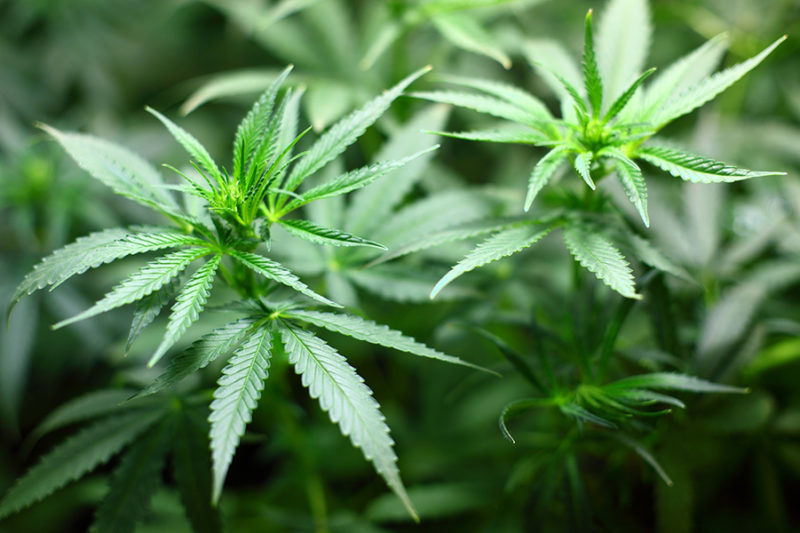
Marijuana is poisonous to dogs, so it’s important to note the difference between marijuana and CBD. Many people advocate using CBD oil as a homeopathic treatment for dogs. The oil has a different composition and won’t harm your dog. Marijuana, on the other hand, is bad news for Fido.
Marijuana contains tetrahydrocannabinol which can cause depression, incoordination, excess salivation, and dilated pupils. In severe cases, it can put your dog in a coma.
30. Mistletoe
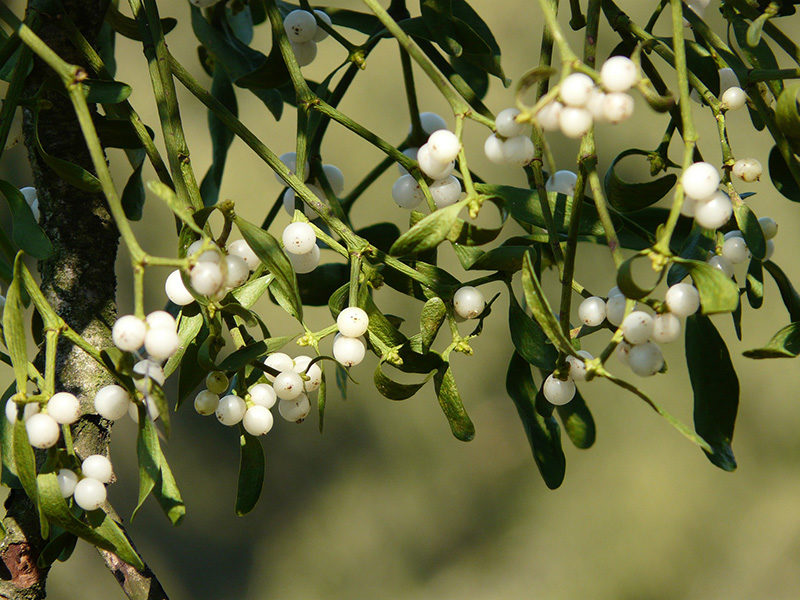
This Christmastime favorite can be deadly for dogs. Both the American and European varieties are poisonous in large enough quantities. The plant can cause drooling, vomiting, diarrhea, abdominal pain, ataxia, seizures, and even death.
31. Morning Glory
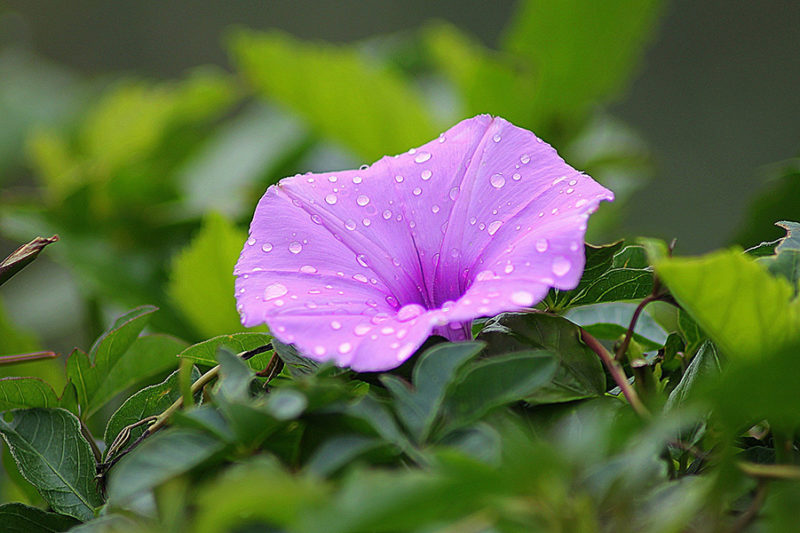
This beautiful vine can cause issues if your dog consumes a relatively large amount. It’s moderately poisonous and can cause vomiting, diarrhea, and agitation or incoordination.
32. Nicotiana
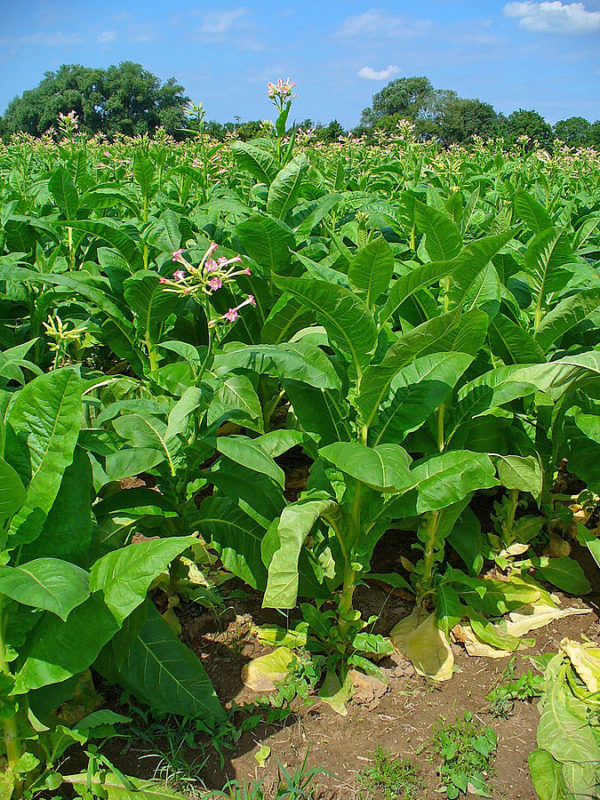
We all know that nicotine is bad for us. It’s bad for your best friend as well. Nicotiana can cause hyperexcitability which is then followed by depression, vomiting, lack of coordination, paralysis, and even death.
33. Oleander
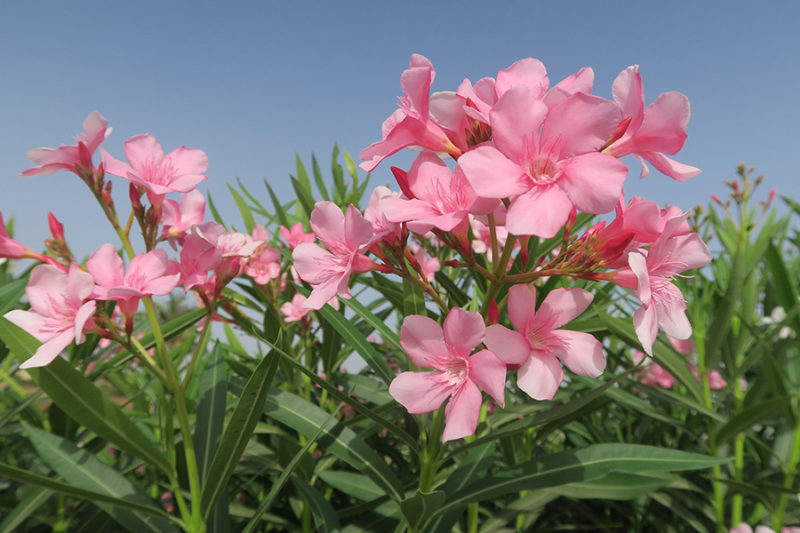
Oleander is another highly poisonous plant. It’s popular in the south and is considered one of the most toxic plants to dogs and children. It contains a substance called cardiac glycosides which can cause heart irregularities, muscle tremors, vomiting, and diarrhea.
34. Pacific Yew
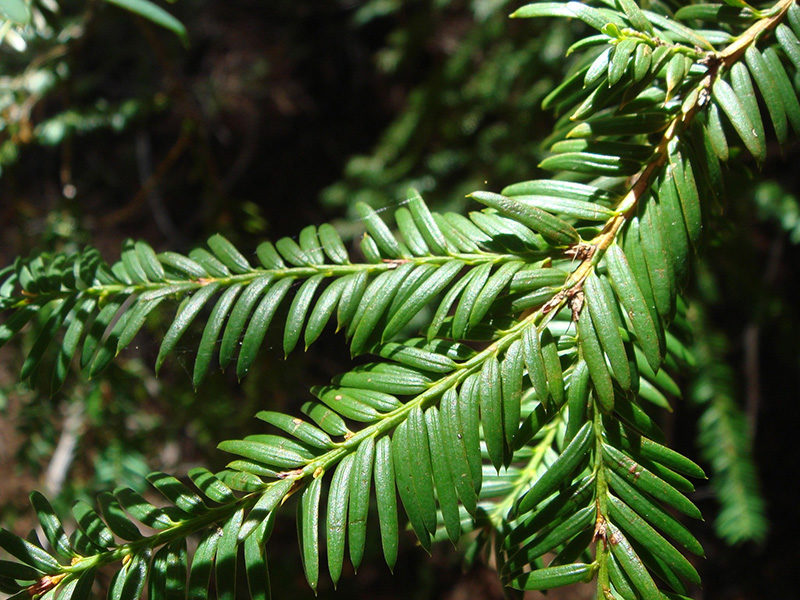
Yews have some pretty severe toxins. Ingesting the leaves can cause tremors, respiratory distress, vomiting, seizures, and heart failure which may lead to death.
35. Sago Palm
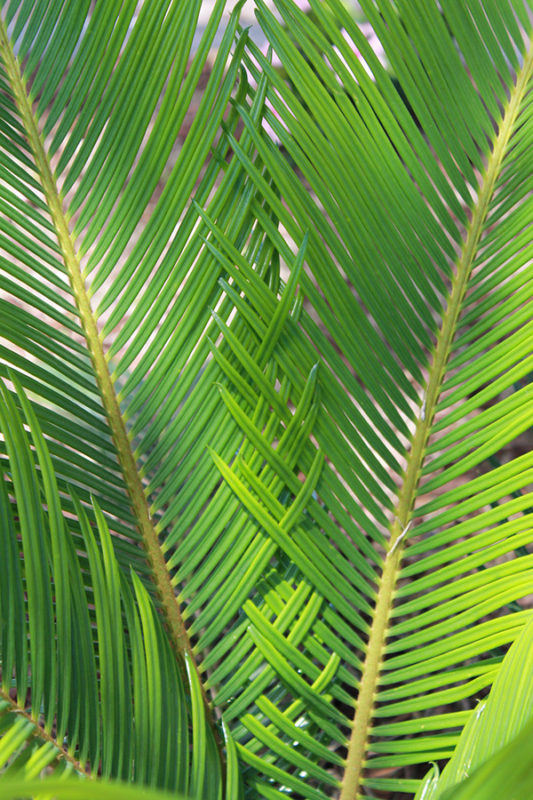
Sago palm is one of the most toxic plants to dogs. It causes diarrhea and bloody vomiting. If enough is ingested, it can cause bleeding disorders, liver failure, and death.
36. Tomato
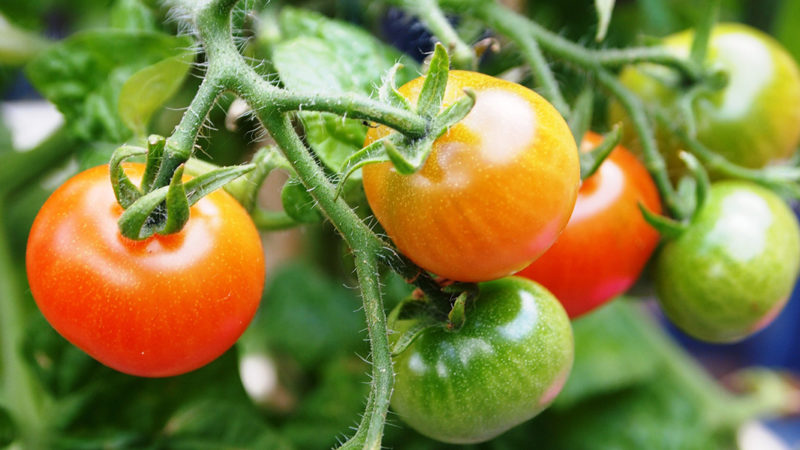
Don’t worry about the sauce on your pizza when you’re sharing with your pooch. Tomato fruit is fine. It’s the plant’s leaves and stem that are toxic to dogs (and humans, too).
Tomato plants can cause excess salivation, severe stomach upset, depression, dilated pupils, and a slow heart rate.
37. Wisteria
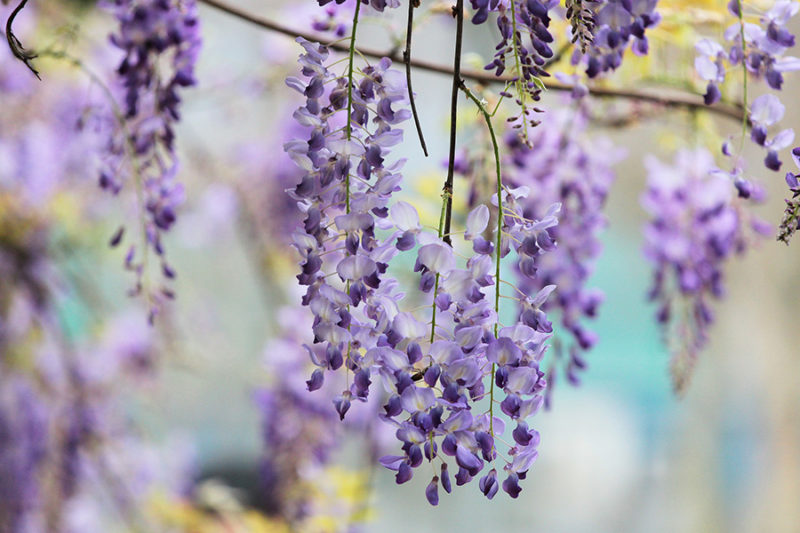
While the whole wisteria plant is poisonous, the flowers and seeds are the most problematic. Dogs who eat wisteria may be confused, dizzy, nauseated, and have stomach pains and diarrhea. They may also collapse or vomit repeatedly. If they consume enough, ingesting wisteria can even cause death.
Why Can I Eat That But My Dog Can’t?
Mammals all have a similar digestive system to humans with the same organs. How we digest our food is different, and that can affect what makes dogs sick. Grapes, for instance, can be deadly for dogs, but humans can eat them without trouble.
The digestive system of the dog is set up for eating meat, and that makes a big difference. Dogs teeth are made for tearing into their food. They often swallow their food in large bites and their stomach capacity is larger than ours. Food stays in the dog’s stomach up to eight hours which is significantly longer than the half hour for humans.
Dogs, however, have a much shorter intestinal track, which breaks down nutrients quickly. This can be a disadvantage when a dog ingests something toxic.
What’s a Dog Owner To Do?
So what’s a cautious dog owner to do in the face of all these plants poisonous to dogs? You can still keep your favorite species around, but know that it’s important to know what to watch for. That way you can keep any poisonous plants in a location that you can monitor or fence off from your pets.

